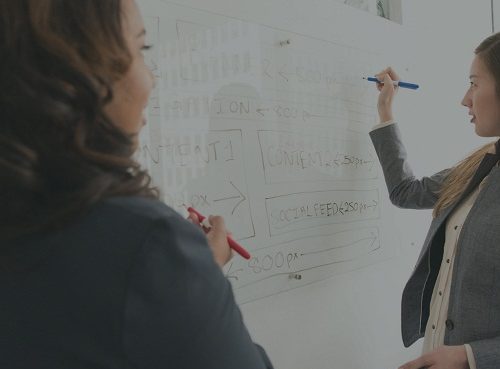Intellectual property laws are lagging behind the latest advances in AI tech, but should intelligent systems ‘own’ the inventions they come up with?

Demand for AI solutions seems assuredly destined for significant growth, with the global market expected to be worth between $126bn (Omdia) and $390bn (Grand View Research) by 2025; PwC reckons AI could contribute up to $15.7tn (£1.11tn) to global economies by 2030. Such projections are highly attractive to nation states keen to boost their GNIs into the 2020s. Big-hitters like China, India, Russia, Saudi Arabia, and the UK have stepped up to declare their intentions to become global centres for AI innovation.
“There’s been a gold rush of applications for patents that relate to AI,” says Matt Hervey, partner/head of AI at law firm Gowling WLG. “Research by the UK Intellectual Property Office [IPO], for instance, found that published applications had risen 400 per cent in the previous 10 years.”
This boom in the intellectual property (IP) stakes has, however, prompted questions over how well current proprietary rights frameworks – such as patents and copyrights – apply to the state of AI innovation, particularly in terms of ownership rights regarding AI outputs, and in ensuring that copyrights are protected against infringement by AI that makes use of third-party materials. “Patent authorities around the world are hosting discussions about how to patent AI, and whether patent law needs to change for AI,” reports Hervey.
These discussions inform a debate about the intrinsic precepts of IP ownership, and what happens legally when an AI system ceases to be a tool for innovators, and starts to automate innovation itself – i.e., develops the ability to ‘invent’ patentable IP. They also echo concerns that investors will hesitate to capitalise AI innovation if IP and copyright laws cannot provide the same legal protection afforded to other computing technologies.
“There is much debate over whether current patent law, as it pertains to AI, is fit-for-purpose, and this is not restricted to AI inventorship,” says Julie Richardson, partner at IP law firm Reddie & Grose. “For instance, a patent application directed to an underlying machine-learning algorithm will be refused. Yet an application that describes and claims that same machine-learning algorithm in the context of image classification for a medical use, will pass the technical contribution test, and may be granted.”
The UK’s IPO has publicly acknowledged that the nature of progressive AI systems and their potential to innovate autonomously ‘might present challenges to the current patent system’.
Law defines the activities under the control of a patent owner, and those carried out without the consent of the patent owner that would infringe a patent. Most law only recognises ‘a person’ (human) as a patent infringer; it does not set out how liability works when a person is not involved. What would happen, for instance, if an AI application were to inadvertently replicate a patented invention, is as yet untested. Would it thereby have committed an infringement of the IP owner’s patent? Would the owner of the AI then be liable for not instructing their system what not to autonomously invent?
“If outdated IP laws do not respond quickly to the rise of inventive machines, a lack of incentive for AI developers could stand in the way of a new era of human endeavour.”
The agencies that oversee such issues might regard such questions as hypothetical until such times as they come to court, where rulings are made; but for other experts the pace of technological progress means that pre-emptive changes are needed.
“If outdated IP laws around the world do not respond quickly to the rise of inventive machines, a lack of incentive for AI developers could stand in the way of a new era of human endeavour,” Professor Ryan Abbott at the University of Surrey’s School of Law has warned. In applications where AI functionally fulfils “the conceptual act that forms the basis for inventorship”, he says, the “right approach is for the AI to be listed as the inventor – and for the AI’s owner to be the assignee or owner of its patents.”
Professor Abbott’s call was in support of a legal challenge to IP ownership rights law instigated by Dr Stephen Thaler, founder & chairman of neural networks firm Imagination Engines Inc, who, in October 2018, registered two patent applications each with the IPO, the European Patent Office, and the US Patent and Trademark Office: one was for a type of food container, the other for a type of rescue beacon.
Dr Thaler registered the applications in his own name; but the applications stated that the inventor of both container and beacon was a ‘connectionist’ AI system called DABUS (Device for the Autonomous Bootstrapping of Unified Sentience), and that Thaler had acquired the right of grant to the patents by his ‘ownership of the creativity machine DABUS’.
In September 2020, the UK High Court dismissed an appeal against the decision of the IPO that rejected the naming of an AI system as ‘inventor’ on the two patent applications. Its judgment was made on the basis that DABUS ‘is not, and cannot be, an inventor within the meaning of the [Patents Act 1977], simply because DABUS is not a person’.
However, the DABUS saga had by then taken an extra twist, because in April the World Intellectual Property Organisation published a Patent Cooperation Treaty (PCT) notice which names DABUS as the inventor of the container and beacon, and accepts that ‘the invention was autonomously generated by an artificial intelligence’. The PCT makes it possible to seek patent protection for an invention simultaneously in a number of countries by filing a single ‘international’ patent application. Such status is deemed to add weight to appeals against national or regional patent Offices that had rejected patent applications.
The DABUS case seems to have stimulated thinking at the IPO, which in September 2020 launched a three-month public consultation, ‘Artificial intelligence: call for views’, which scoped AI’s impact on IP, patents and copyright. Its findings will be made public at some to-be-confirmed point in 2021.
The consultation reflects the IPO’s cognisance of the implications that AI’s powers of invention will have on current legal frameworks that underpin its decisions. “There is uncertainty about how copyright law applies,” it states, “how we should treat works created and used by AI systems, and whether the current approach is right [also needs to be considered].”
It continues: “AI tools [as] part of the toolkit for the ‘person skilled in the art’ raises questions about where the threshold for inventive step should be set. Views on [this] threshold may change if the whole process of invention only involves AI, with no human input, [and] the concept of the ‘person skilled in the art’ needs to extend to the ‘machine trained in the art’.”
AI systems also have the capability to autonomously generate new works, the IPO points out – works which may themselves be eligible for protection under UK law: ‘Further uncertainty of traditional definitions and interpretation of patent law could occur as AI develops. With the increasing use of AI, there is the increased chance of patent infringement by an AI machine rather than a human. This could raise a number of issues.’
The issue of infringement is key to the IPO’s perspective. Discouraging the use of AI to infringe patents means that ‘who should be held responsible for any infringing actions’ should be considered, the IPO states. It is not obvious that naming the AI itself would achieve this: if a person is to be held liable, it is not immediately clear who this should be. There may several humans behind infringement by AI, like the developer, the manufacturer, and the owner.
The UK was the first country to provide copyright protection for ‘computer-generated’ works, with the Copyright Designs and Patents Act 1988. In circumstances where an otherwise copyrightable work is created, but no natural person qualifies as an author, the ‘producer’ (human) of the work is deemed to be the author. As with patents and IP, AI looks set to become a disruptive factor in copyright assessment.
One of the first areas where concerns have arisen is over AI technology’s ability to come up with ‘original’ creative content that’s based on existent recorded elements, such as audio recordings or images. Sony Computer Science Laboratories’ Flow Machines platform, for example, offers a type of ‘co-writing’ that ‘combines human creativity with AI music’ that can ‘compose’ new music based on ‘samples’ of thousands of recorded music examples.
When prototyped in 2016, Flow Machines was somewhat of a novelty and its commercial application untested. Since then it has been re-developed into a fully-featured AI-assisted compositional tool that’s used by musicians and others to facilitate musical creativity.
As such platforms gain commercial traction and become revenue generators rather than proofs-of-concept, ownership contention is likely to arise. Whereas copyright owners may grudgingly accept that musical quotations and sampling have become standard compositional techniques when performed by humans, they might be less forbearing if their musical elements are being reprocessed by a computer for financial gain without royalties payable.
Source: E&T










